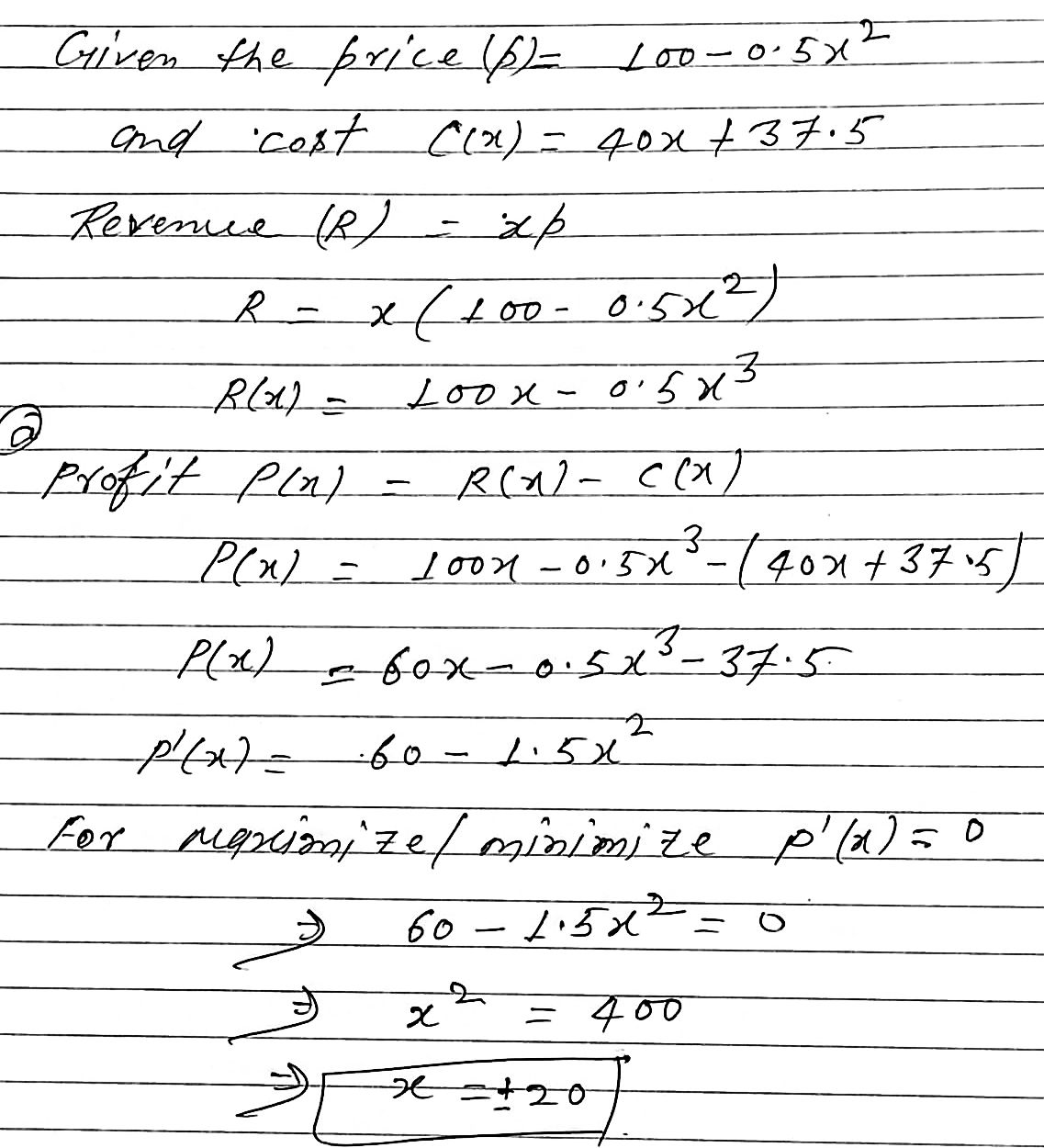A Commedity has a demand function modeled by P= 100-0.5x2 (x= number of units demand and p is Price per unit ) and a totell cost tunction eCX)=40x+ 37.5 U) How units must be sold to maximize total profit many (use FOT and include the toable) b) What is the maximum value of total profit e)At whett price per unit is totel profit maximized
Minimization
In mathematics, traditional optimization problems are typically expressed in terms of minimization. When we talk about minimizing or maximizing a function, we refer to the maximum and minimum possible values of that function. This can be expressed in terms of global or local range. The definition of minimization in the thesaurus is the process of reducing something to a small amount, value, or position. Minimization (noun) is an instance of belittling or disparagement.
Maxima and Minima
The extreme points of a function are the maximum and the minimum points of the function. A maximum is attained when the function takes the maximum value and a minimum is attained when the function takes the minimum value.
Derivatives
A derivative means a change. Geometrically it can be represented as a line with some steepness. Imagine climbing a mountain which is very steep and 500 meters high. Is it easier to climb? Definitely not! Suppose walking on the road for 500 meters. Which one would be easier? Walking on the road would be much easier than climbing a mountain.
Concavity
In calculus, concavity is a descriptor of mathematics that tells about the shape of the graph. It is the parameter that helps to estimate the maximum and minimum value of any of the functions and the concave nature using the graphical method. We use the first derivative test and second derivative test to understand the concave behavior of the function.
![A commodity has a demand function modeled by:
\[ P = 100 - 0.5x^2 \]
where \( x \) is the number of units demanded and \( P \) is the price per unit, and a total cost function:
\[ C(x) = 40x + 37.5 \]
**Questions:**
a) How many units must be sold to maximize total profit? (Use the First Derivative Test (FDT) and include the table)
b) What is the maximum value of total profit?
c) At what price per unit is total profit maximized?
d) Verify parts (a) and (b) by using a graphing calculator. (Use an appropriate window)
**Diagram:**
There is a sketch where \( x \) (units) is on the horizontal axis ranging roughly from 0 to 100, and \( P(x) \), the price, is on the vertical axis. A marker is placed on the vertical axis at $2000, indicating the total profit level achieved at the price level associated with the optimal number of units.](/v2/_next/image?url=https%3A%2F%2Fcontent.bartleby.com%2Fqna-images%2Fquestion%2Fcd1f29aa-2726-4e0f-b51b-b6c8284cf53b%2Ff55796d2-9d95-44a2-a247-4af6dd2ca07e%2Fbiiie1g_processed.jpeg&w=3840&q=75)
As per bartleby expert policy, only first three subparts are to ve answered. Kindly repost the remaining subpart.

Step by step
Solved in 2 steps with 2 images









